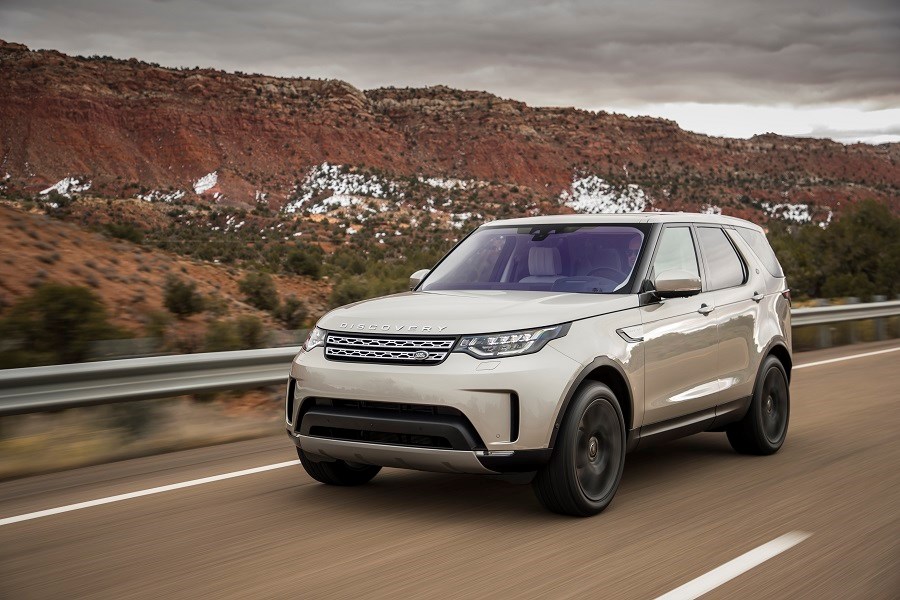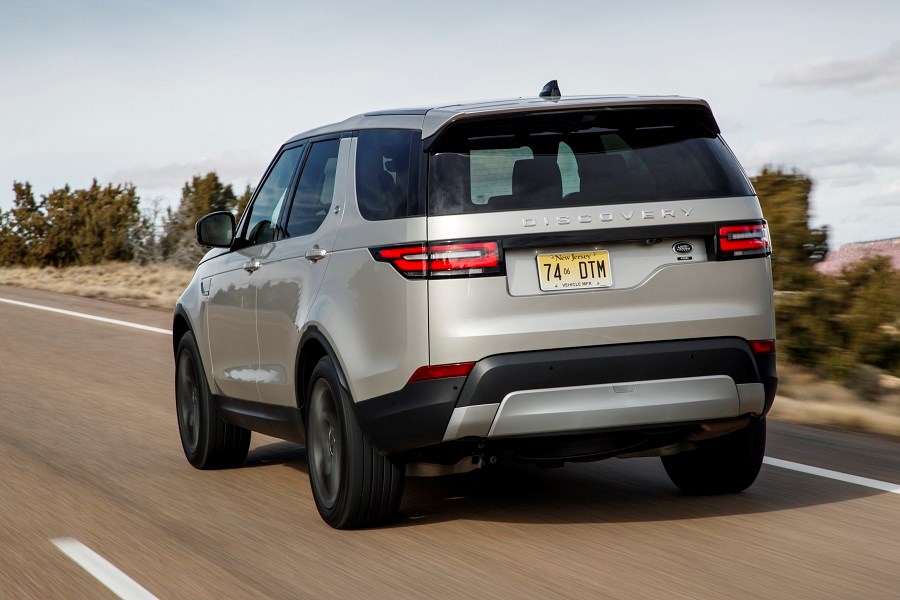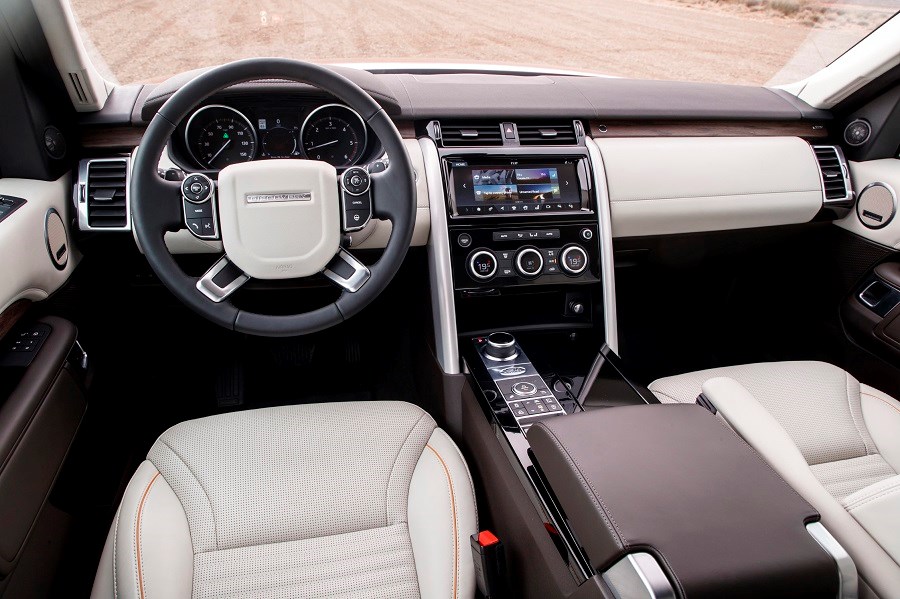Latest model
The Discovery has never been a petite car, but the latest model is truly gargantuan in size, and towers above nearly everything else on the road today.
It was another big change in design for the model, and it adopted a similar look to the smaller Discovery Sport. Perhaps the biggest alteration was the cabin, which was centred around a new ‘InControl’ 10-inch touchscreen system that rid the cabin of any unnecessary buttons.
In typical Land Rover fashion, off-road capability was improved, with the latest model having a higher ground clearance and a wading depth of 90cm — a 20cm gain relative to the previous car. A range of off-road settings ensures that the Discovery can go further off the beaten track than ever before.
Since launch in 2017, the Discovery has won a number of awards including Auto Express Magazine’s Car of the Year, while a Commercial model has been added to the range to appeal to business users.
A 30th Anniversary Edition was also launched in January 2019 to mark three decades of the Discovery. Just 400 of these are available in the UK, with each coming in metallic paint finishes. Other extras include 22-inch alloy wheels, a Meridian sound system and a fixed glass roof.
Value for money
Given the sheer size of the Discovery, it’s no surprise that it’s no longer a cheap model. Prices start just under those of the Volvo XC90 and Audi Q7, although the entry-level ‘S’ version is not very well equipped. Cloth seats, halogen headlights and no climate control or satellite navigation are not what you expect when splashing out nearly £50,000 on an SUV. It’s the next step up — SE — that’s the spec of choice, starting from £54,085. Top spec versions are expensive, though, with prices stretching to almost nearly £70,000.
If you want an exceptionally cheap off-roader, you can pick up an old Discovery for around £1,000, although expect to have to fork out for inevitable reliability woes. Meanwhile, around £7,000 will pay for a sturdy Discovery 3.
The latest model is still quite new, with the cheapest ones hovering around the £36,000 mark at the time of writing. There are some great offers available on nearly-new models, however. We spotted an example in mid-spec SE trim, which had covered 4,000 miles and was less than a year old, for £40,000. That’s nearly £15,000 off the price off a new one, which is a fantastic discount.
Looks and image
There’s one thing that’s certain about the Discovery; you won’t go unnoticed in it.
There are very few cars on sale today that can match the sheer size of the latest model. From from the front it’s stylish and bold-looking, with a sharp resemblance to the Range Rover.
However, the rear of the current Discovery has caused controversy. The off-centre rear number plate has been a common feature of the model for some time, but a new format was adopted on the latest car. The outcry regarding this decision has been so intense that aftermarket firms are now fitting new boot lids with a central number plate for thousands of pounds. We personally think it’s inoffensive, but looks are always subjective.
The inside is less controversial, with a stylish and modern layout throughout, headed up by the easy-to-use 10-inch touchscreen. The quality inside is excellent, with first-rate materials used throughout. It feels built to last — whether that be for those using their Discovery’s as working vehicles or as family cars. Our only gripe with the cabin is how sparse it feels on entry-level versions. This is because Land Rover haven’t included climate control and are offering plain cloth seats, which feels a little stingy to us.
The latest Discovery is far more agile than its predecessor, but you have to remember just how top heavy this SUV is. This means there’s plenty of roll in the corners and it’s not a car that can be pushed as a result.
The Discovery really excels when it comes to comfort and refinement. The cabin is very hushed even at motorway speeds, while the air suspension does a fantastic job of ironing out bumps in the road to leave a relaxed and smooth drive. The three engines also suit the Discovery’s character well, with each delivering plenty of power to ensure that it never feels lethargic, despite it weighing over two tonnes.


